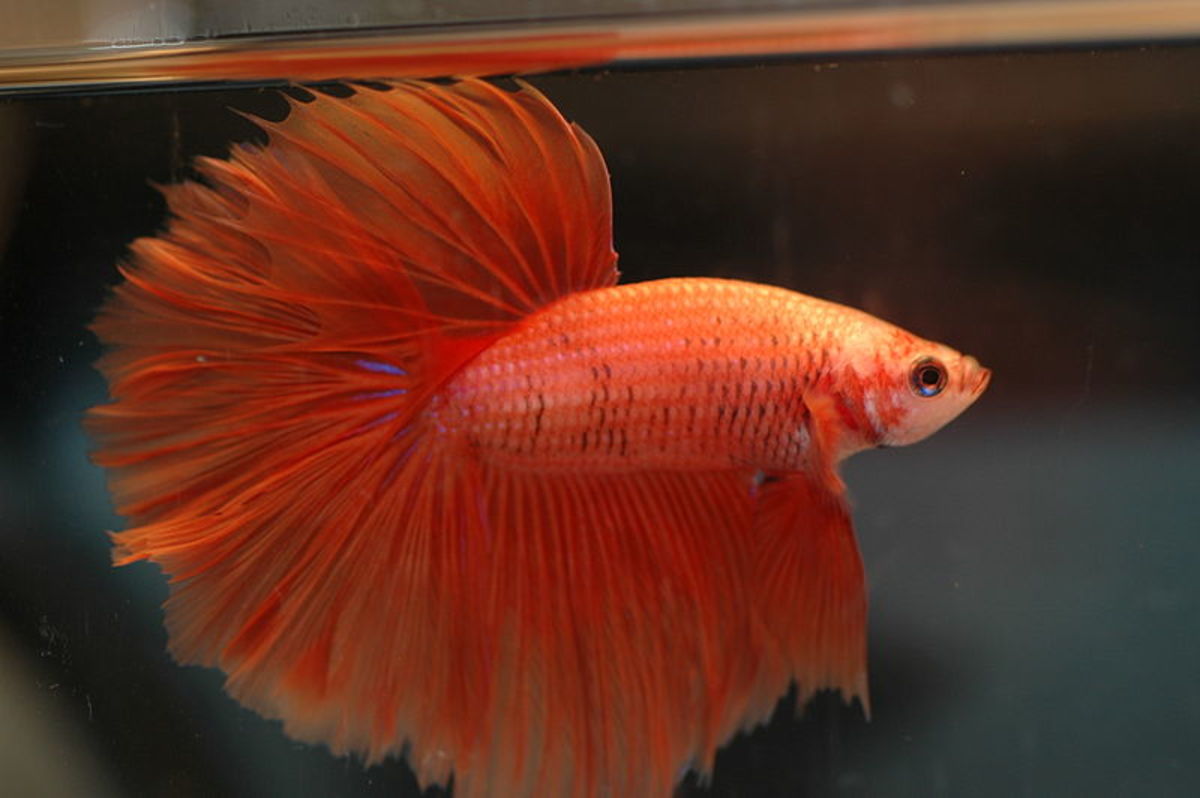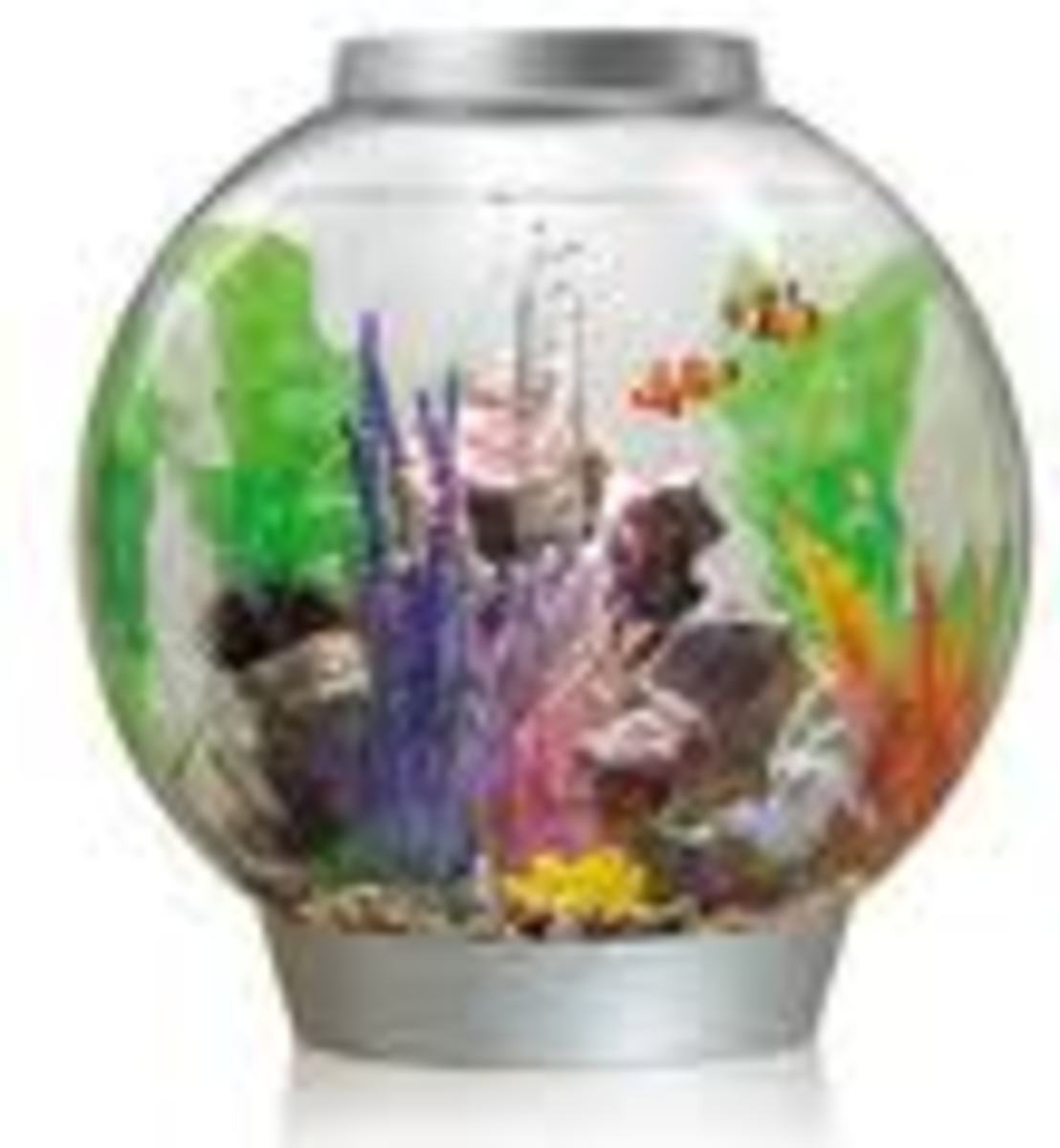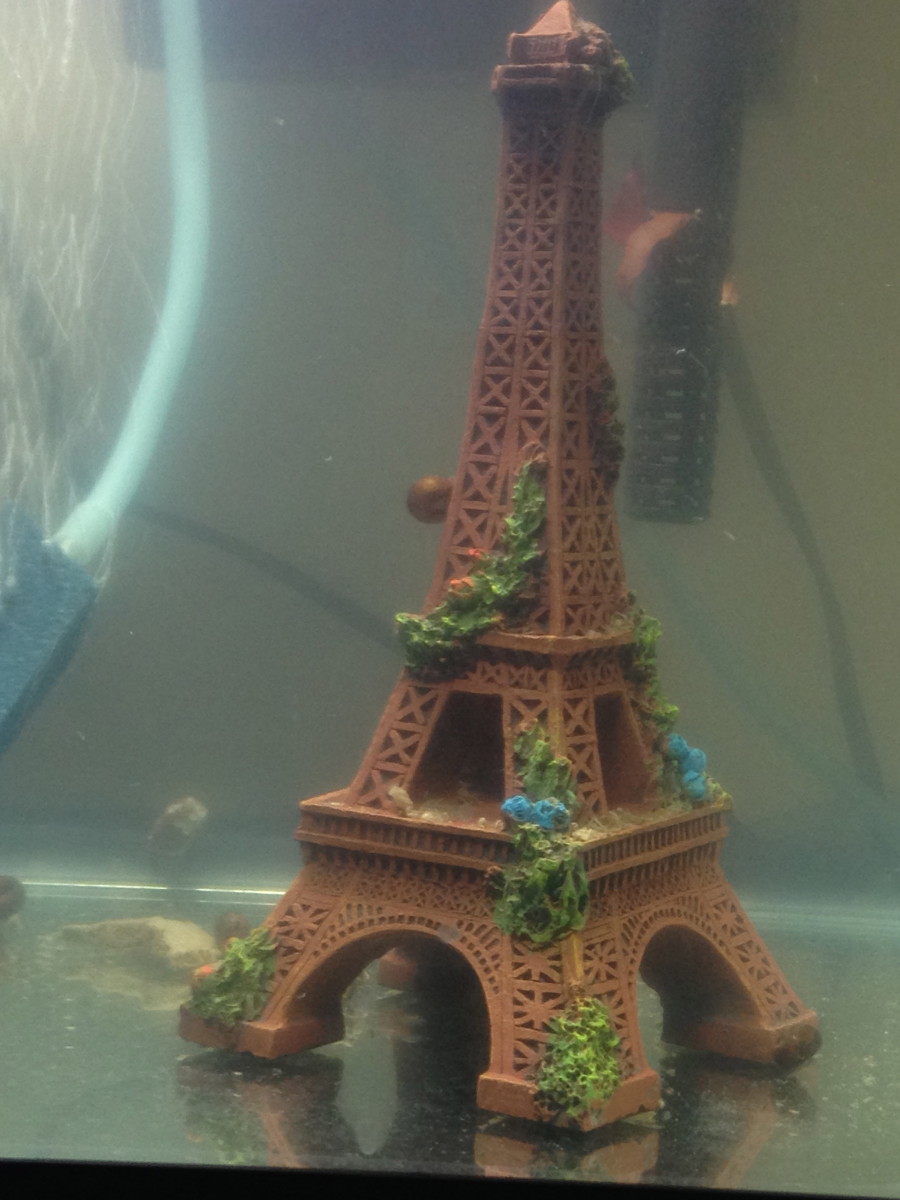The Natural Aquarium, 4 Biological Filters
How to build your own biofilter from a cannister filter
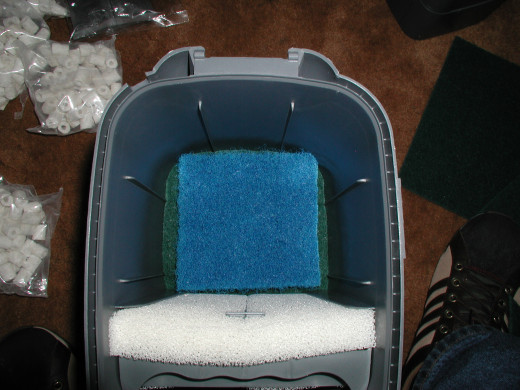
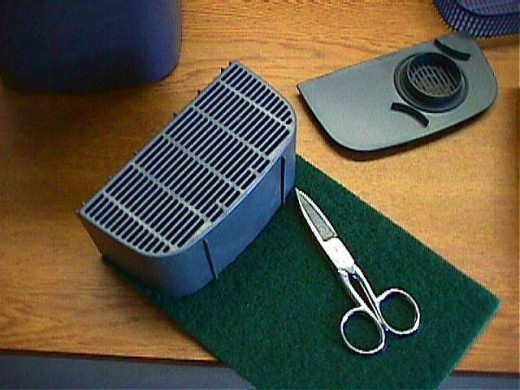
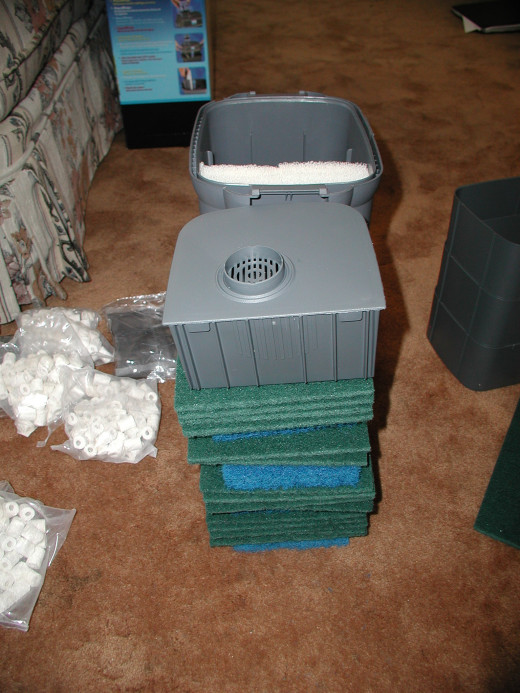
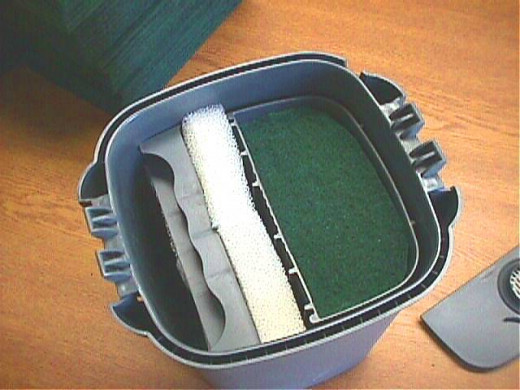
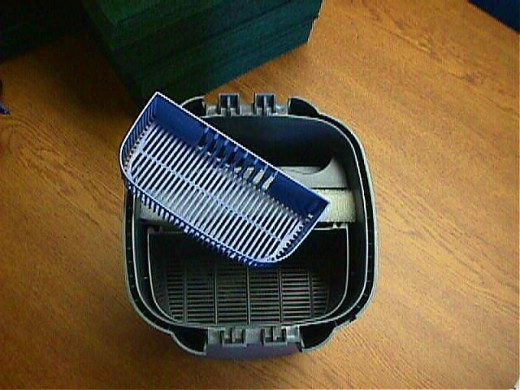
Step Four, Biological Filters
(Images to the right show how to build your own biological filter for a few dollars. Trust me, I'm Scottish!))
I went to my books and the internet and started to read about biological filtration, the bacteria and the various requirements of making a good filter.
In short, this is allowing natural bacteria in the tank to do its job and handle the waste of the fish and plants, etc. (See the technical information at the end for specifics.) The strange part is that all the information was pointed toward fish keeping, not toward a total aquarium system. Most bacterial filters are used for farm raised fish simply because of the size differential. It is way too intensive to attempt this kind of high maintenance water conditioning for large systems.
Those biological systems used for aquariums at that time make the error of the “biological wheel” where the wheel, as in the film Finding Nemo, is exposed to the air, decreasing the CO2 in the tank which again, the plant need.
I know that there is a bacteria designed to process every organic molecule. The information I found verified that this was feasible if you kept just enough fish in the tank to balance the nitrogen load and handle all the lesser elements in the tank.
Is this a good trade: a tank with low maintenance but few fish? It seems unwittingly, some people did this with small glass containers sitting near windows. But fewer fish?
I don’t like crowds, I avoid crowds, except at Haunama Bay on Oahu where I tolerate the crowds, and also aquariums where I like crowds, the more fish, the merrier. Besides, live bearers reproduce ad hoc (“Endler’s livebearer” is sometimes called “Endless livebearer”) so controlling their numbers is tough, and this is what I was raising.
So, let’s check the surface area of the tank to see where we can get more surface for bacteria to live. Where are the surfaces that can be occupied by bacteria?
The walls of the tank, the surface of the water, the bottom of the tank, that is, the top of the substrate, at this point, gravel, the gravel surfaces below the top layer, the surfaces of the plants (make no mistake, in a well planted tank, this is a very large area), in the filter, the surface of the charcoal, the amino chips, and the fiber.
I certainly can increase the surface area of the plants by letting more of them stay in the tank, so this is easy. I did another little test and watched.
It worked. The aquarium continued to improve and I had fewer and fewer problems with the fish since they were not periodically medicated which weakens the immune system and kills the bacteria and fungus in the tank.
Women, always conscious about bacteria, start to question me at this point. We have been brought up to think that bacteria are bad. In the normal course of food preparation, this is good thinking. We are meticulous when we cook chicken. We wash our hands before, during, and after handling it because of bacterial contamination which is very common with chicken simply because it is such a good food, bacteria like it too. But this is a small ecosystem and the bacteria are helpful unless they happen to be blue-green in color, we will address that later.
They occupy all surfaces, but you will never see them, they are not large colonies, they are extremely small individuals.
What is the area left to increase surface area? The filter!
Raising Cherry Shrimp.
One more Little Test
What common things in our house could we use to increase the surface area?
My wife was working on re-stuffing a pillow with that artificial white fiber fill material which I was already using for filter material because of the fine fibers.
A typical filter contains some cotton or fiber material to filter out fine particles. I had replaced the expensive cotton with the inexpensive fiber fill in the small bubble filters with good results. Let’s try that here!
The results were staggering! (Most of the time at least.) The water was crystal clear and the fish and plants thrived.
Eureka! I found it! Gold! (Apologies to Archimedes.)
OK, it turned out to be pyrite, but it was good for now.
I started selling plants back to the fish store every few weeks. Things were developing just fine for several months then suddenly, bang! I woke up one day to find a very dirty aquarium. Everyone was fine (all of the ‘fin people’ inside), but the water was exceptionally dirty.
Obviously the filter had failed.
On examination I found the biological load of the fiber fill had increased beyond the structural capacity of the fiber. It was just too much organic material. So I simply replaced the material and within hours we were back to a clean aquarium!
Now there is an old axiom that goes like this: If you keep doing what you have been doing, you will keep getting what you have been getting.
True to the axiom, I kept getting what I was getting because I kept doing what I was doing. Was it worth it to get this ultra-clean aquarium only to have it go bad once or twice a year? Remember it wasn’t a biological criticality problem, that is, the fish and the plants were fine as were the bacteria at work, it just looked bad until I got around to changing the material and the bacteria had more to eat in the tank. Yuck!
Well, yes, it was. Why? Because now I was only working on my aquarium when it needed trimming, or when the filter needed changing every 6-8 months. I was saving about $15-$20 dollars every month in 1990 dollars, as well as the time shopping for aquarium supplies and many hours every week, and lots of water.
I’m good with this and along I tuned for a few years.
Life is a little richer than a book can show, and during the time above I wanted to add more CO2 to my tank.
My wife was making home made whole wheat bread. We ground our own wheat. Hmmmm, this is good! I watched as the yeast fermented and acted on the honey in the warm water, and the bread rose.
But why?
Because the yeast broke down the honey in an anaerobic environment (“without oxygen”) and it produced CO2 bubbles.
Viola! There was the answer!
We had just finished a gallon container of apple juice. I took the container, drilled a ¼” hole in the top, glued on a ¼” air hose left over from my bubble stones (I had trouble throwing them out, I loved these little guys!) then put a pound of sugar into the apple juice then filled it with water.
OK, fellow health nuts, I had to go to the store to buy the sugar, we didn’t have any in the house!
I put this next to the tank on one of my audio speakers then ran the tube into the tank. Since I wanted this to be taken up by the water, I needed to find some way to put this into a water flow to give the bubbles time to be absorbed.
Here is the solution, I put it into the canister filter uptake.
And the crowd went wild! The crowd of plants, that is. As you can see from the photo, the plants loved it.
It turned out OK, this is back in 2003
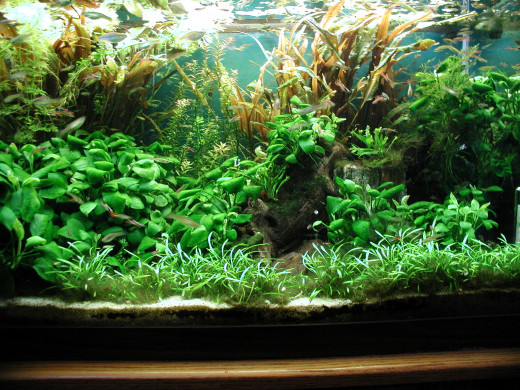
© 2015 Ronald A Newcomb

